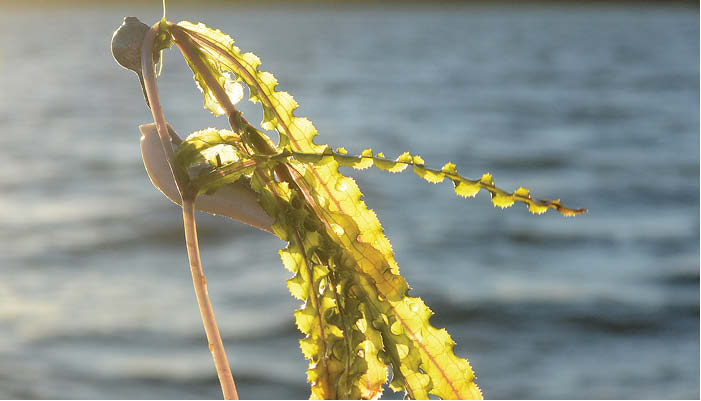You’ve made your list and are checking it twice, anticipation for fishing is growing faster than your lawn this spring.
Current license – got it. Life jackets – check. Next stop, open-water fishing 2014. The only thing holding you back from a day on the water is Mother Nature, but that’s spring in North Dakota.
The past 20-plus year wet cycle has produced marvelous fishing in North Dakota. From Devils Lake to Lake Sakakawea and in hundreds of spots between, great opportunities exist for fishing in rivers, streams and local impoundments. Safe to say it’s been a heyday for anglers.
It’s interesting to observe human nature any time a few weeks or even a month of dry weather pops up, and we immediately wonder if the next dry cycle is upon us and threatening many of our lakes? The truth of the matter is, we really won’t know that until it happens, and in most case there’s not much we can do about it.
One threat that anglers can do something about, and need to address, is aquatic nuisance species, which will likely present a continuing threat from here on out.
North Dakota already has some of these invasive species. The common carp, introduced in this country before people knew how much they could damage local fish populations, is probably the most familiar.
Carp have disrupted North Dakota fisheries for decades, but not every water has them, and the state’s laws are designed to greatly minimize the potential that we humans will spread them to those clean waters.
Carp aren’t the only threat, though. Over the years as fishing opportunities have expanded, so have the battles against new invaders across the nation and our state. A decade ago I was writing about salt cedar or tamarisk along the Missouri River System. Now it’s zebra mussels from the east and silver carp in the James River.
In a way, the ANS threat is like a summer storm on the horizon while you’re enjoying time in or on the water. We know the storm is on the way, but it’s hard to say where the impact will be worst, and if it misses altogether, when will the next threat arise.
History has shown us the threat of aquatic nuisance species is worthy of concern. Thirty years ago, when zebra mussels were first discovered, did anyone understand how devastating the infestations would be in the Great Lakes region?
And in the past 10 years, these mussels have moved to other waters. Resources needed to slow or stop just zebra mussel expansion could have been better used elsewhere, but without a multi-state conscious effort to slow the spread of all ANS, they would be hurting many more waters than is currently the case.
That’s why rules and regulations are on the books.
Now that open-water fishing is upon us, it’s a good time to take a more thorough look at ANS so we can minimize or prevent their future appearance in North Dakota waters.
1. All aquatic vegetation must be removed from boats, personal watercraft, trailers, and fishing and hunting equipment such as fishing poles, bait buckets, lures, duck decoys, and waders before leaving a body of water. That means “vegetation free” when transporting watercraft and/or equipment away from a boat ramp, landing area or shoreline.
2. All water must be drained from boats and other watercraft, including bilges, livewells, baitwells and motors before leaving a water body.
3. Live aquatic bait or aquatic vegetation may not be transported into North Dakota.
All water must be drained from watercraft prior to entering the state.



